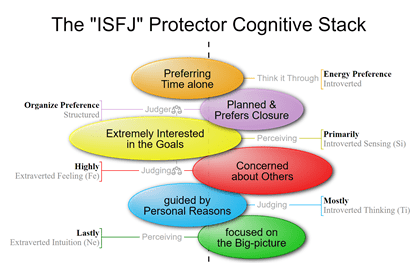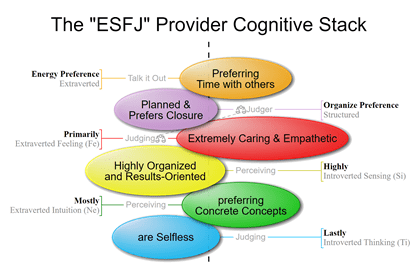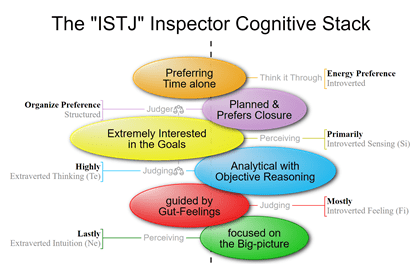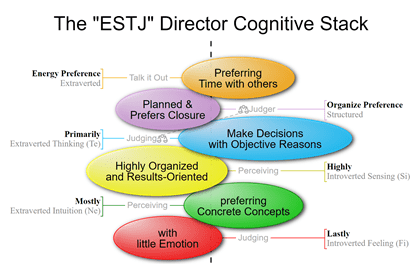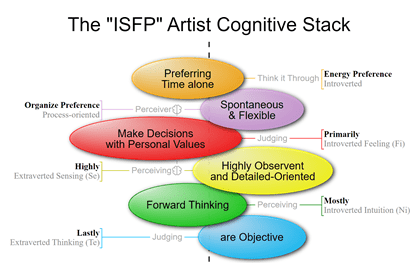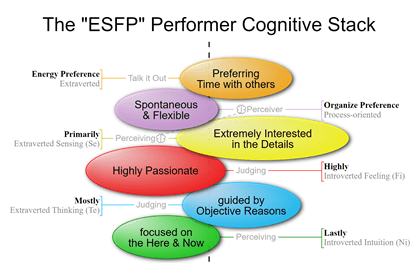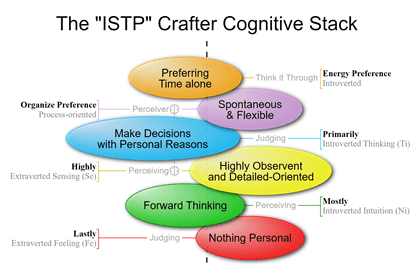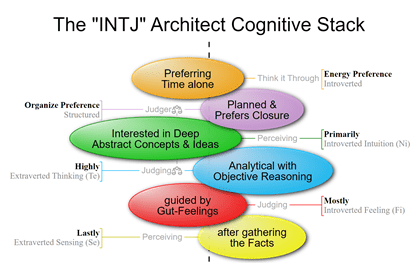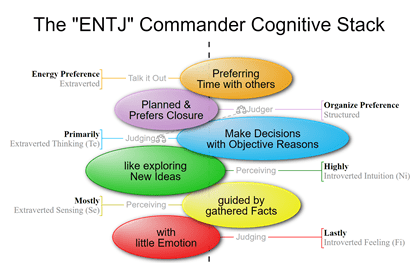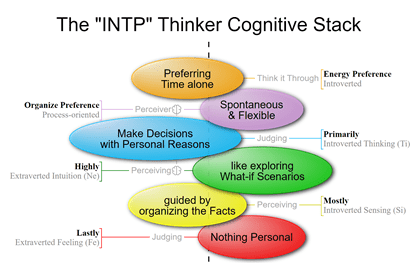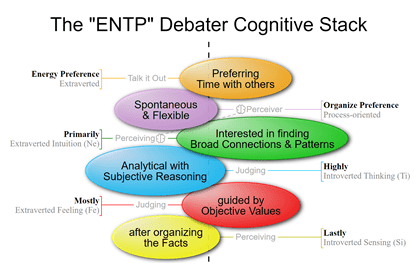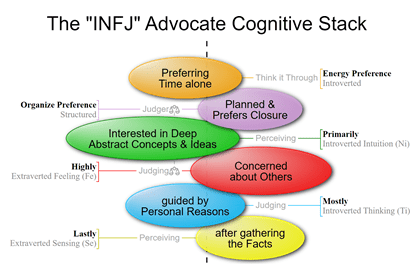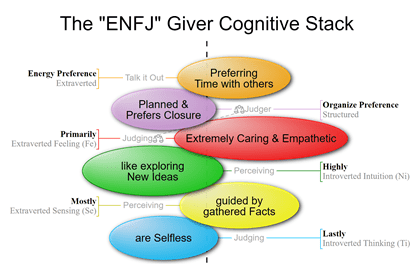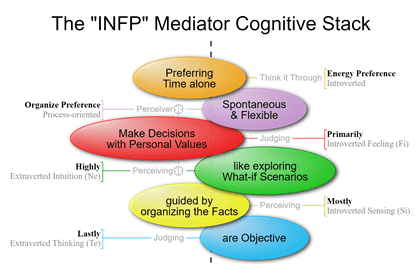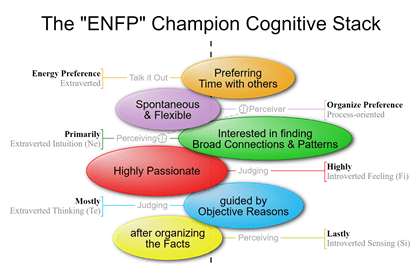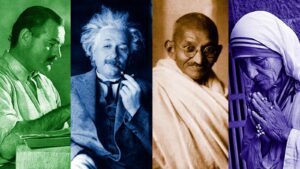What are the Keirsy Personality Temerpaments?

David Keirsey, born in 1921, was an American psychologist specializing in conflict management and family counseling. He began researching human behavior and Personality in the 1940s.
Keirsey blended the Myers-Briggs Personality Types with Ernst Kretschmer’s model of the Four Temperaments, developing the Keirsey Temperament Sorter, which was made famous by his book “Please Understand Me.”
Instead of using the term Personality, Keirsey used Temperament. He viewed it as a configuration of observable Personality Traits, communication habits, patterns of action, characteristic attitudes, values, and talents. To Keirsy, Temperament encompasses personal needs, individual contributions, workplace contributions, and societal roles.
Keirsey organized his Four Temperaments as a matrix and named them as suggested by Plato: Artisan (Iconic), Guardian (Pistic), Idealist (Noetic), and Rational (Dianoetic).
The matrix is divided in half vertically by Communication Styles: Concrete versus Abstract. The matrix is divided horizontally into two action styles: Cooperative and Utilitarian.

Concrete versus Abstract Communication Style
Some people are focused and like to talk primarily about the external, concrete world of everyday reality: facts and figures, their work, home, family, the news, sports, and weather—all the who, what, when, where, and how things in their lives.
Other people primarily like to talk about the internal, abstract world of ideas: theories and conjectures, dreams and philosophies, beliefs and fantasies — all the whys, ifs, and what might be in life.
For the most part, Concrete people talk about reality, while Abstract people talk about ideas.
According to Keirsey, everyone can engage in both observation and introspection. People are observant when they touch objects or otherwise perceive the world through their five senses. When people reflect and focus on their internal world, they are introspective.
However, individuals cannot simultaneously engage in observation and introspection. The extent to which people are more observant or reflective affects their behavior.
Observant people focus on practical matters such as food, shelter, and their immediate relationships. Carl Jung used “Sensation” to describe people who prefer Concrete perception.
Introspective people are more ‘head in the clouds’ and abstract in their views. They focus on global or theoretical issues such as equality or engineering. Carl Jung used the word Intuition when describing people who prefer Abstract perception.
Keirsey’s two Communication Styles, Abstract versus Concrete, are similar to the Myers-Briggs “Perceiving” Cognitive Functions, Intuition (Abstract) and Sensing (Concrete).
Cooperative versus Utilitarian Action Style
Some people act practically and pragmatically; that is, they do what gets results, what achieves their objectives as effectively or efficiently as possible. They only check afterward to see if they observe the rules or go through the proper channels. People with this behavior have a Utilitarian Action Style.
On the other hand, some people act primarily cooperatively and socially acceptable; they try to do the right thing in keeping with agreed-upon social rules, conventions, and codes of conduct. Only later do they concern themselves with the effectiveness of their actions. People with this behavior have a Cooperative Action Style.
Utilitarian people mostly do what works, while Cooperative people do what’s right.
Cooperative-type people pay more attention to other people’s opinions and are more concerned with doing the right thing. Meanwhile, Utilitarian-type people pay more attention to their thoughts or feelings and are more concerned with doing what works.
The two Cooperative Temperaments are the Idealists (Cooperative and Abstract) and Guardians (Cooperative and Concrete).
The two Utilitarian Temperaments are the Rational (Pragmatic and Abstract) and the Artisan (Pragmatic and Concrete).
Neither the MBTI nor Jung has a corresponding or comparable dichotomy to the Keirsey Action Style classification. The Action Style significantly differs between Keirsey’s Temperaments and Myers and Jung’s work in Cognitive Personality Styles.
Informative versus Directive Roles
Keirsey distinguishes between people who generally communicate by informing others versus those who speak by directing others. This distinction subdivides each of the four Temperaments into eight Roles.
The Directive Roles are Operators (Directive Artisans), Administrators (Directive Guardians), Mentors (Directive Idealists), and Coordinators (Directive Rationals).
The Informative Roles are Entertainers (Informative Artisans), Conservators (Informative Guardians), Advocates (Informative Idealists), and Engineers (Informative Rationals).
Expressive versus Attentive Role Variants
Individuals who act before observing are Expressive. In contrast, people who follow before working are Attentive.
Expressive and attentive variants further subdivide the eight roles into 16 types correlating to the 16 Myers-Briggs personality types.
The Expressive Role Variants are:
- Promoters (Expressive Operators)
- Performers (Expressive Entertainers)
- Supervisors (Expressive Administrators)
- Providers (Expressive Conservators)
- Teachers (Expressive Mentors)
- Champions (Expressive Advocates)
- Field Marshals (Expressive Coordinators)
- Inventors (Expressive Engineers)
The Attentive Role Variants are:
- Crafters (Attentive Operators)
- Composers (Attentive Entertainers)
- Inspectors (Attentive Administrators)
- Protectors (Attentive Conservators)
- Counselors (Attentive Mentors)
- Healers (Attentive Advocates)
- Masterminds (Attentive Coordinators)
- Architects (Attentive Engineers).
Four Interaction Roles
In his book Brains and Careers (2008), Keirsey divided the Role Variants into groupings that he called:
Four differing roles that people play in face-to-face interaction with one another.
Proactive Enterprising Roles
Initiators (Expressive and Directive)—Preemptive
Contenders (Attentive and Directive)—Competitive
Reactive Inquiring Roles
Coworkers (Expressive and Informative)—Collaborative
Responders (Attentive and Informative)—Accommodative
Myers-Briggs Types versus Keirsey’s Temperaments.
Keirsey integrated the sixteen MBTI Personality Types into his Four-Temperaments model. Each Temper is divided into informative and directive roles, each having an expressive (extraverted) and attentive (introverted) role Variant.

The Keirsey Temperament Sorter differs from the MBTI in that the MBTI focuses on Interior Thoughts and Feelings, especially emphasizing the dichotomy between Extraversion and Introversion.
The Keirsey Sorter is more interested in External Behavior, especially the dichotomy between Intuition and Sensing.
- The MBTI primarily focused on how people think and feel; Keirsey focused more on behavior, which is directly observable.
- The MBTI descriptions use a linear four-factor model; Keirsey’s descriptions use a systems field theory model.
- Following Jung’s lead, the MBTI emphasized the Extraversion/Introversion (Expressive/Attentive) dichotomy; Keirsey’s model emphasizes the Sensing/Intuition (Concrete/Abstract) dichotomy.
- The MBTI grouped types by ‘Cognitive Function Attitudes’ and Keirsey by Temperament.
Keirsey’s Four Temperaments correlate with the following MBTI combination of preferences:
- Guardian Temperament is the MBTI Sensing plus Judging (SJ) Types.
- Artisan Temperament is the MBTI Sensing plus Perceiving (SP) Types.
- Idealist Temperament is the MBTI Intuition plus Feeling (NF) Type.
- Rational Temperament is the MBTI Intuition plus Thinking (NT) Type.
The MBTI pair has the same dominant function.
- ESTJs with ENTJs are both Extroverted Thinkers.
- ISFPs with INFPs are both Introverted Feelers.
- INTPs with ISTPs are both Introverted Thinkers.
- ENFJs with ESFJs are both Extroverted Feelers.
Keirsey says these same groupings are very different because they have different Temperaments.
- ESTJs are Guardians, whereas ENTJs are Rationals
- ISFPs are Artisans, whereas INFPs are Idealists
- INTPs are Rationals, whereas ISTPs are Artisans
- ENFJs are Idealists, whereas ESFJs are Guardians.
The Guardian Personality Temperament

As Concrete Cooperators, Guardians speak primarily of their duties and responsibilities, of what they can monitor and take good care of. They’re careful to obey the laws, follow the rules, and respect the rights of others.
- Guardians pride themselves on being dependable, helpful, and hard-working.
- Guardians make loyal mates, responsible parents, and stabilizing leaders.
- Guardians are dutiful, cautious, humble, and focused on credentials and traditions.
- Guardians are concerned citizens who trust authority, join groups, seek security, prize gratitude, and dream of meeting justice.
- Guardians seek security and a desire for belonging.
- Guardians are best at logistics, are great organizers, checkers, and facilitators, and are very supportive of others.
- Generally, they are more left-brain dominant, conservative black-and-white thinkers who prefer things remain safe, secure, and the same.
Guardians make up as much as 40 to 45 percent of the population, and this is a good thing because they usually end up doing all the indispensable but thankless jobs the rest of us take for granted.
Guardians are MBTI Sensing/Judging (SJ) Types
Keirsey classified the Guardian as Concrete/Sensing with Judging (xSxJ) MBTI Personality Types. These include the Types with Introverted Sensing and Extraverted Thinking or Feeling (a Judging Function) as the first Dominant or second Auxiliary Functions in either order.
- The Protector (ISFJ) is a conservator who excels in supporting and securing.
- The Provider (ESFJ) is a conservator who excels in supporting and supplying.
- The Inspector (ISTJ) is an administrator who excels in regulating and certifying.
- The Supervisor (ESTJ) is an administrator who excels in regulating and enforcing.
ISFJ and ESFJ Types are Guardians with Introverted Sensing and Extraverted Feelings as the first Dominant and second Auxiliary Functions in either order.
ISTJ and ESTJ MBTI Types are Guardians with Introverted Sensing and Extraverted Thinking as the first Dominant and second Auxiliary Functions in either order.
Learn more about the Guardians Temperament.
The Artisan Personality Temperament

As Concrete Utilitarians, Artisans speak primarily about what they see right in front of them, about what they can get their hands on. They will do whatever works, whatever gives them a quick, practical payoff, even if they have to bend the rules.
- Artisans are fun-loving, optimistic, realistic, and focused on the here and now.
- Artisans pride themselves on being unconventional, bold, and spontaneous.
- Artisans make playful mates, creative parents, and troubleshooting leaders.
- Artisans are excitable, trust their impulses, want to make a splash, seek stimulation, prize freedom, and dream of mastering action skills.
- Artisans generally are right-brain dominant.
- The SJs and SPs each comprise 38% of the population.
There are many Artisans, perhaps 30 to 35 percent of the population, which is good because they create much of the beauty, grace, fun, and excitement the rest of us enjoy.
Artisans are MBTI Sensing/Perceiving (SP) Types
Keirsey classified the Artisan as Concrete/Sensing with Perceiving (xSxP) MBTI Personality Types. These include the Types with Extraverted Sensing (a Perceiving Function) as the first Dominate or second Auxiliary Function.
- The Composer (ISFP) is a performer and a great improviser and excels at synthesizing.
- The Performer (ESFP) is an entertainer proficient in improvising and excels in demonstrating.
- The Crafter (ISTP) is an operator who excels in expediting and using instruments.
- The Promoter (ESTP) is an operator best at expediting and persuading others.
ISFP and ESFP MBTI Types are Artisans with Extraverted Sensing and Feelings as the first Dominant or second Auxiliary Function.
ISTP and ESTP MBTI Types are Artisans with Extraverted Sensing and Thinking as the first Dominant or second Auxiliary Function.
Learn more about the Artisans Temperament.
The Rational Personality Temperament

As Abstract Utilitarians, Rationals speak primarily of what new problems intrigue them and what new solutions they envision. Always pragmatic, they act as efficiently as possible to achieve their objectives, ignoring arbitrary rules and conventions.
- Rationals tend to be pragmatic, skeptical, self-contained, and focused on problem-solving and systems analysis.
- Rationals pride themselves on being ingenious, independent, and strong-willed.
- Rationals make reasonable mates, individualizing parents, and strategic leaders.
- Rationals are even-tempered; they trust logic, yearn for achievement, seek knowledge, prize technology, and dream of understanding how the world works.
- Rationals want to be good at their work and achieve mastery without being pushed.
- Rationals are great at strategy and excel in tasks that involve engineering, theorizing, coordinating, and developing concepts.
- Rationals love details, are very analytical, and pursue knowledge for knowledge’s sake.
- Generally, they are more analytical or left-brain dominant.
Rationals are scarce, comprising as little as 5 to 10 percent of the population. But because of their drive to unlock nature’s secrets and develop new technologies, they have done much to shape our world.
Rationals are MBTI Intuition/Thinking (NT) Types
Keirsey classified the Rational as Abstract/Intuition with Thinking (xNTx) MBTI Personality Types. These include the Types with Intuition and Thinking as the first Dominant or second Auxiliary Functions in either order.
- The Mastermind (INTJ) is a coordinator who excels in arranging and executing.
- The Field Marshal (ENTJ) is a coordinator who excels in arranging and mobilizing.
- The Architect (INTP) is an engineer who excels in construction and design.
- The Inventor (ENTP) is an engineer who excels in constructing and devising.
INTJ and ENTJ Judging MBTI Types are Rational with Introverted Intuition and Extraverted Thinking as the first Dominant or second Auxiliary Functions in either order.
INTP and ENTP Perceiving MBTI Types are Rational, with Extraverted Intuition and Introverted Thinking as the first dominant or second auxiliary Functions.
Learn more about the Rationals Temperament.
The Idealist Personality Temperament

As Abstract Cooperators, Idealists speak primarily of what they hope for and imagine might be possible for people. They want to act in good conscience, always trying to reach their goals without compromising their code of ethics.
- Idealists are enthusiastic, trust their Intuition, yearn for romance, seek their true selves, prize meaningful relationships, and dream of attaining wisdom.
- Idealists pride themselves on being loving, kindhearted, and authentic.
- Idealists tend to be giving, trusting, and spiritual, focused on personal journeys and human potential.
- Idealists make intense mates, nurturing parents, and inspirational leaders.
- Idealists’ most excellent natural ability is diplomacy.
- An idealist is best if you need someone to clarify, unify, or inspire.
- Idealists are generally right-brain dominant.
- NTs and NPs each make up 12% of the rest of the population.
Idealists are relatively rare, making up no more than 15 to 20 percent of the population. However, their ability to inspire people with enthusiasm and idealism has given them influence far beyond their numbers.
Idealists are MBTI Intuitive/Feeling (NF) Types
Keirsey classified the Idealist as Abstract/Intuition with Feeling (xNFx) MBTI Personality Types. These include the Types with Intuition and Feeling as the first Dominant or second Auxiliary Functions in either order.
- The Counselor (INFJ) is a mentor who excels in developing and guiding.
- The Teacher (ENFJ) is a mentor who excels in developing and educating.
- The Healer (INFP) is an advocate who excels in mediating and conciliating.
- The Champion (ENFP) is an advocate who excels in mediating and motivating.
INFJ and ENFJ Judging MBTI Types are Idealists with Introverted Intuition and Extraverted Feelings as the first Dominant or second Auxiliary Functions in either order.
INFP and ENFP Perceiving MBTI Types are Idealists with Extroverted Intuition and Introverted Feelings as the first Dominant or second Auxiliary Functions in either order.

